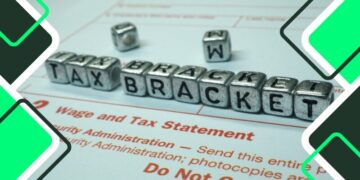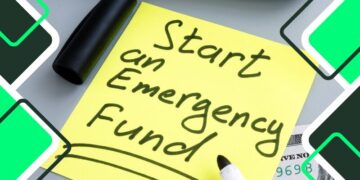The Risks and Rewards of Investing in ETFs

We already know that investing your money can be a challenging task, especially in the world we live in, where everything seems to be so expensive and none of us want to make a bad investment and lose what we worked so hard to conquer. But if you have a goal that you want to achieve, it is very likely that you may be thinking about ways to increase your income.
Are you interested in buying a house? Do you want to travel abroad? Do you have a dream car, or are you simply trying to save for your retirement? It doesn’t matter what your reasons are, before you invest in anything, you must build a strategy and organize yourself in order to get what you want.
That is why we are here to talk about one of the possibilities you may consider in this journey: investing in an ETF. In this article, we will cover what ETFs are, their functionalities, and some of the potential benefits and risks of investing in them.
Understanding ETFs
First of all, you must learn about your options. In this case, the Exchange-Traded Fund (ETF). To help you understand how it works, let’s take a look at the following example:
You are starting to paint, but it is really hard to choose the paints individually, as there are so many colors available in the store. So instead of picking each one by hand, you decide to buy a box of paints. That way, you’ll have a variety to work with and won’t have to spend time choosing each one separately. Now, that is basically how an ETF works, as it carries different investments all in one.
By investing in an ETF, you are accessing a diverse number of assets in multiple sectors, such as stocks, gold, bonds, and others, that are bundled by a professional fund manager. Another important characteristic is that you can buy and sell ETFs through a stockbroker, and that the market price normally follows benchmarks such as the ASX 200 and S&P 500.
The ASX 200 is the main index of the Australian Securities Exchange, tracking the 200 largest listed companies in the country. The S&P 500 is a US-based index that includes 500 of the largest American companies — and there are ETFs available in Australia that replicate its performance.
In the country, ETFs are traded on the Australian Securities Exchange (ASX), the country’s primary stock exchange. It’s also possible to access international ETFs through platforms that support global trading.
What are the benefits and risks about investing in ETF?
Like any other sort of investment, there are certainly good and bad parts to going for an ETF. That is the reason why, before deciding where to invest, it is necessary to do a lot of research and feel confident about your choice. Let’s take a look at some of the most important points you should think about.
Benefits:
- Diversification is probably the best part of investing in an ETF, as you will be able to decrease the risk of investing in only one area. By investing in ETFs, you will diversify your portfolio across different sectors that could cover, for instance, commodities, currencies, emerging markets, and others;
- Flexibility is also a major point, as you can usually buy and sell ETFs more easily, allowing you to feel free to adjust how you would like to manage your investments;
- They are usually cheaper than regular funds, as the operating costs are typically lower, and so are the management fees;
- Investing in ETFs usually requires less effort on your part, as you are passively investing without the need to make individual choices;
- As holdings are publicly listed every day, it is probably safe to say that ETFs represent transparency, as you can follow market changes online.
Risks:
- Even though they are usually seen as flexible, depending on the circumstances, you may face some challenges when trying to sell ETFs, so you should definitely consider market risks and conditions;
- There is always a chance that a new government or regulatory body could introduce new laws and taxes that might cause changes in the market;
- If you are investing outside Australia, you should also consider where you are putting your money. Some countries may be facing political and social changes or other factors that can result in fluctuations and lower returns, which may have a significant impact on market volatility;
- Another thing you should consider is the way taxation is done. ETF distributions represent your share of the fund’s income, so it has to be reported on your tax assessment. Depending on the asset class, the tax treatment may also vary.
To learn more about the benefits and risks of investing in an ETF, please consider reading more at the Australian Securities Exchange page.
Is investing in an ETF really for me?
]Well, to be honest, this is a question you should be asking yourself, because you are the one who knows yourself the best, just as you know how your financial circumstances are at the moment.
But what we can say to help you reflect is that investing in an ETF can be a good option if you are new to the market and are looking for a lower-cost opportunity, and also if you consider yourself a cost-conscious trader and prefer to invest in a more passive way. If you identify with any of these descriptions, then maybe you should consider researching more about this kind of investment, as it may fit your profile.
On the other hand, as you are most likely a beginner in the ETF world, it is also essential that you think about the risks and make sure it is really worth it for you to try. If, after researching reliable sources, you are still feeling insecure, consider taking advice from a professional who can provide you with more information on this matter, analyse your investment profile, and help you decide what to do.
Another tip is to always start slowly. Do not bet everything you have at once, as it is almost never a good idea. In finance, sometimes you may have to take risks, but when you’re just starting out, it is more important to be cautious and responsible.
Conclusion
So far, you have learned what ETFs are, their benefits and their risks, and if you kept reading till the end of this article, you are most likely considering investing in this sector.
If your final decision is to do so, please remember to start slowly and cautiously, and only after you have learned at least the basics about the entire process of investing in an ETF. Being anxious and reckless will not be helpful in any way, especially in finance.
It does not matter if you intend to invest in this area to save for buying a house, your retirement, or your children’s education. Whether your goals are short, medium, or long-term, focus on low fees and choose to diversify wisely.
Always remember that the financial world is not miraculous, and you will have to be patient and disciplined if you want to be a trader. Make sure to set clear goals and analyse your options carefully.
Keep in mind that this is an area that can change depending on what is happening in the world, so being well-informed and paying attention to the news can also be really helpful. Always keep an eye on geopolitics, economics, and financial news. And if you want to explore other areas you can invest in, please read “10 Smart Investments for Young Australians in 2025”.
Related content

Understanding tax brackets and how to minimise your tax burden

10 Smart Investments for Young Australians in 2025

Emergency Fund: How to Start and What to Do

How to Take Advantage of Tax Benefits in Australia

Investing in the Australian Real Estate Market: What You Need to Know
